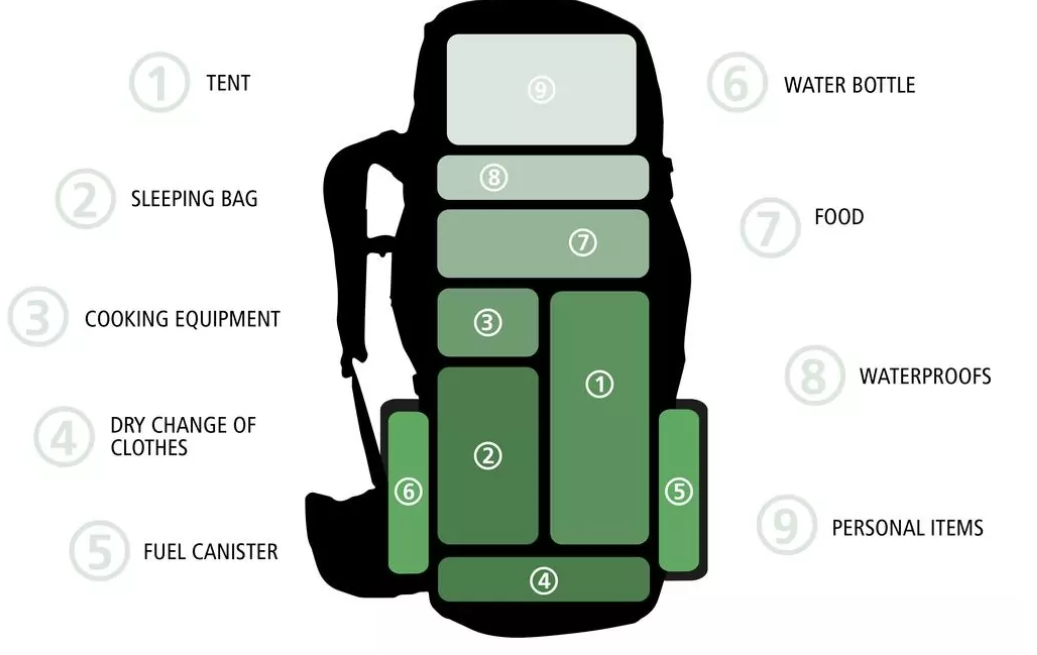Packing Your Rucksack
Below shows an example of how to pack a rucksack for an expedition. Ultimately, packing your bag correctly is all about weight distribution, and ensuring that you have easy access to the items you’ll need during the day and in an emergency. Packing too much heavy equipment towards the front of your bag will pull you backwards as you walk, making activities like trekking up hills more difficult, and if you have too much weight on the left or right, you’ll be pulled to one side
How To Pack Your Kit
1. Your heaviest/biggest item should go into your pack first – in this example, your tent. Put your tent in your bag vertically, against the part of the bag that will be against your back. This will keep the weight of the tent close to your body, making it easier to carry.
2. Put your sleeping bag beside your tent to balance the weight. Your sleeping bag should always be inside another waterproof bag to keep it dry.
3. Bulkier items should go in the middle of the rucksack, such as cooking equipment.
4. If your bag has a bottom access point, keep a dry change of clothes at the bottom. The rest of your clothes can be used to pack out the spaces that haven’t yet been filled.
5. Balance the weight of the side pockets with liquids: keeping them upright will prevent them from leaking. This can include water bottles and liquid fuel.
6. Put your food at the top of the rucksack, with what you’re going to eat next at the very top. This prevents you having to search through your bag for food and stops the food getting squashed.
7. Put your waterproofs in last, so that you can get to them quickly if it starts to rain.
8. Finally, fill the space in the lid of your bag with all the things you might need during the day – your first aid kit, snacks, sun-cream and head torch. Once you’ve packed your bag, give it a shake to make sure there are no loose spaces that you haven’t filled.

